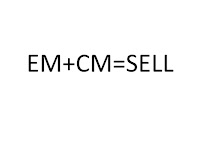Emerging market stocks + currency mismatch
 I am not too fond of the label ”Emerging Markets”, at least not in discussions about investment opportunities. I mean, what, exactly, is an emerging market? And which countries should count as emerging? Another thing that is often misused, or misunderstood, is buy/sell recommendations. Very often you hear someone recommending a buy or sell for this or that stock without adding a time horizon. I mean, isn’t it possible that a stock could be expected to fall more before it starts climbing? Yes, of course! Also emerging markets stocks…. I will come back to this particular issue in the last paragraph below.
I am not too fond of the label ”Emerging Markets”, at least not in discussions about investment opportunities. I mean, what, exactly, is an emerging market? And which countries should count as emerging? Another thing that is often misused, or misunderstood, is buy/sell recommendations. Very often you hear someone recommending a buy or sell for this or that stock without adding a time horizon. I mean, isn’t it possible that a stock could be expected to fall more before it starts climbing? Yes, of course! Also emerging markets stocks…. I will come back to this particular issue in the last paragraph below.Anyway, this entry is not about these naïve observations. Instead, what I want to highlight is a rather unknown (I think) negative (sell) observation that is applicable, first and foremost, to emerging country stocks. As of lately, many emerging market currencies have weakened dramatically against particularly the US dollar. Whether we are talking about BRICS or MINTS or any other group of up and coming countries, weaker commodity prices, the slowdown in China and the bizarre monetary policy in rich western economies have put a lot of pressure on their currencies. So far so good! Everyone knows this and everyone expects this to continue for some time with the trillions of dollars that flowed into these countries now possibly departing. Everyone also knows that this could be a problem since household plus company debt now roughly equals total GDP in these emerging markets. And, unfortunately, much of this debt is in US dollars! This amount is higher, even, than the amount of debt in the developed markets before the financial crisis.
Now, what my (very timely, indeed) research shows is that dramatic currency falls, of the size seen recently in many emerging markets, coupled with actual historically observed currency mismatches in company books in selected emerging markets, could lead investors (and banking regulators) to materially underestimate the actual company credit risk. While it is obvious that the default probability increases if the debt is issued in a foreign currency and the assets are in local currency, my research shows that the increase in default correlations due to the mismatch is very important as well. For more on the latter issue I refer to Byström (2014) The impact of currency movements on asset value correlations. Journal of International Financial Markets, Institutions and Money, Volume 31, July 2014, Pages 178–186. That paper looks at the asset correlation bias resulting from firms’ assets and liabilities being denominated in different currencies. It focuses on the time-variation in the bias and on the dependency of the bias on currency movements.
So, again, regardless of whether you are optimistic or pessimistic about emerging market stocks I think my research should be acknowledged. I do not think the increased credit risk is priced (fully) in the stock market, particularly for local EM banks, and it should therefore bias any stock market forecast downwards. Personally, referring to the first paragraph above, I believe in emerging markets stocks (whatever that means…..) in the longer run. Based on the discussion above on currency mismatch, however, I think (ceteris paribus) that it would be wise to wait some time before one increases the proportion of emerging market stocks in one´s portfolio. If I had to make a prediction it would be that 2017 or so could be a good time to enter the market. Earlier if the prices drop quicker than expected and later if they hold out. In other words, I am pessimistic in the short run and optimistic in the long run. It is obviously possible……
Caveat emptor!
Komentar
Posting Komentar